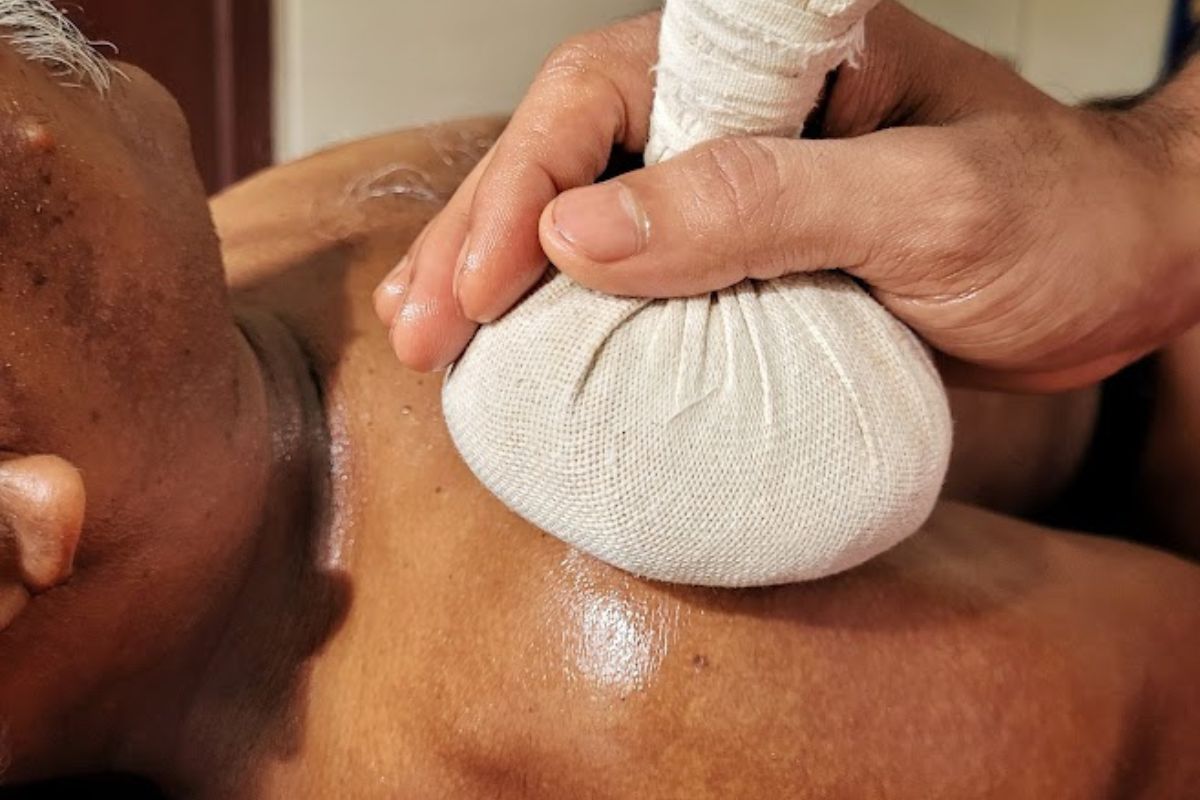Overview
Apabahukam is a disease condition that locally affects the shoulder joint, with restriction of joint as the classical symptoms. As there are a lot of clinical conditions like Rotator cuff tendinitis, Bicipital tendinitis, Cervical spondylosis, Osteoarthritis of shoulder, or Adhesive capsulitis (Frozen Shoulder), the symptoms match mostly to Frozen shoulder. In a frozen shoulder there will be pain along with stiffness on the joint even without an intrinsic disease.
The disease can also be seen associated with Diabetes Mellitus, Myocardial Infarction etc.
Apabahuka has been explained under the Kevala Vatika disease, where the aggravated vata gets trapped in the joint which causes restriction of the movements. Classically, the disease is characterized with stiffness or restriction of the hand movements, whereas clinically restriction is seen associated with pain. The intensity of the pain can be severe enough to disturb the sleep.
Location or Site of manifestation:
The disease has its localisation in the Amsa-Moola (The Shoulder joint) which causes sosha of the sira, snayu and Kandara (The adjacent soft tissues). The Amsa sandhi (Shoulder Joint) has two joints involved, The acromioclavicular joint and the glenohumeral joint. The glenohumeral joint is a highly moveable ball-and-socket synovial joint that is stabilized by the rotator cuff muscles, which guides all movements of the forearm. Due to its wide range of movements it has been considered as a Marma (Vital Point). As it is one of the most mobile joints in the body, the vulnerability of diseases is also high in this disease.
When there is a pathophysiology, there will be excessive scar tissue or adhesions across the glenohumeral joint, causing pain with stiffness and limitation in the movements of the joints.
Symptoms
The patient will have stiffness and limitation of joint movements associated with or without pain. The disease typically develops slowly, and in three stages. Each stage can last a number of months.
In case of Apabahuka, minute or negligible form of symptoms produced before the actual manifestation such as mild restricted movements of affected shoulder joint, vague shoulder pain, mild stiffness in the upper extremities and other similar symptoms of Apabahuka in its minimal severity. And this can be considered as the initial stage of the disease.
- Freezing stage:
Any movement of the shoulder causes pain, and the shoulder’s range of motion starts to become limited.
The next is the actual stage of disease where the disease has manifested clinically and symptoms start to disturb the day to day activities.
- Frozen stage:
Pain may begin to diminish during this stage. However, the shoulder becomes stiffer, and using it becomes more difficult.
In the later phase there can be slight improvement in the range of movement. But there can be muscle wasting in the adjacent structure which reduces the stability of the joint.
- Thawing stage:
The range of motion in the shoulder begins to improve.
Risk Factors
- Age: is the main risk factor for arthritis. As age advances, chances of getting degeneration is higher.
- Previous Injuries.
- Diabetes mellitus.
- Prolonged immobility of the joint.
- Family history
Types
- Bahya hetuja – Sandhigata vata as a result of an external cause, like injuries, persistent strain on knees or even sporting activities.
- Abhyantara hetuja – Sandhigata vata as a result of internal causes like degeneration as a result of old age or from inflammatory disorders like rheumatoid arthris.
Investigations
In most cases, mere physical examination will not be sufficient enough for the probable diagnosis there is a greater reliance upon specific maneuvers and imaging for assessment. X-rays, MRI may help to reveal the thickening of capsular and pericapsular tissues, Electrical studies may be helpful to know the nerve function and Arthroscopy to show soft tissue injuries that are not apparent from the physical examination, x-rays, and other tests.
Causes
For all the pains, there will be the involvement of Vata. Apabahukam is a disease caused by external and internal factors.
As Amsamoola is a Marma,any injury to this region will cause the disease. Causing injury to the joint and surrounding structures reduces the mobility of the joint further leads to the adhesion of the structures. Excessive use of the joint can also cause pain due to the wear and tear which further leads to the stiffness of the joint.
Internally the vata aggravating foods can cause excessive dryness in the body which also damages the cartilages and soft tissues which assist the movements in the joint.
- Langhana (excessive or improper fasting or dieting).
- Food habits like anashana (starva- tion), adhyasana (taking meal before the digestion of previous food) etc.
- Intake of katu(pungent), tikta (bitter), kasaya (astringent), ruksha (dry), seeta virya yukt (cold potency).
- Excess intake of foods like suska shaka (dry vegetables), vallura (dry meat), mudga (gram), masura (lentil) etc.
- Vegadharana (suppression of urges) like vata (flatus), mutra (urine), purisha (faeces), sukra (se- men), charrdi (vomiting), kshavathu (sneezing), udgara (belching), waspa (tears), etc.
Beyond these, Diabetes can also be a reason for shoulder pain. Due to chronic high blood sugar levels, sugar molecules may attach to collagen in the joint causing the limitation in movements.
Diagnosis & Treatment
Formulation of differential diagnosis that leads to an accurate diagnosis and timely therapy forms the main goal of musculoskeletal evaluation. Examination of the affected joint helps to understand more about the degree of progress of arthritis before coming to a decision about the management.
Clinically, in this condition patients usually present with shoulder pain followed by gradual loss of both active and passive range of motion. Pain is generally worse at the extremes of motion. External rotation is often the first motion affected on clinical examination.
Any treatment for arthritis should aim at preserving the functionality of the joints. This is achieved by preventing further destruction of the joint, keeping the inflammation and the associated symptoms like pain and stiffness under control and to the minimum, to achieve the maximal range of joint mobility and to stop the development of deformities and complications.

Ayurveda Therapies
Oil therapies are known to increase the mobility of the joints, relieve muscular spasm, and reduce stiffness. Oil therapies like abhyanga oleates the body, whereas others like pizhichil, potalis or kizhis combine both oleation and sudation techniques to improve mobility and flexibility of joint, reduce pain and inflammation, and improve the day today life of the patient. Lepam or analgesic pastes are used to reduce swelling and inflammation at the site. Specific Treatments including Nasya, Utharabakthika Snehapana, Siropichu or Sirovasthy, Sneha-sweda and Brhmana therapies are very effective in Apabahuka.
Diet
A light vegetarian diet is recommended, with avoidance of foods known to trigger painful disease activity (e.g., Mushrooms, Cabbages, Cauliflower etc.). As Diabetes mellitus is also a reason for the manifestation of the disease, diebetic diet is to be designed with food stuff which will not increase Vata but reduces the direct sugar. Sneha dravya is to be added to the diet according to the prakriti of the patient and stage of the disease.
Allopathic Management for Frozen Shoulder
Treatment for frozen shoulder involves range-of-motion exercises and,and physical therapy to help you improve shoulder strength and flexibility. Sometimes, corticosteroids and numbing medications are injected into the joint capsule. In a small percentage of cases, arthroscopic surgery may be indicated to loosen the joint capsule so that it can move more freely.
Do’s and Don’ts
Do’s :
- Do regular exercise to maintain strength and range of movement.
- Do keep the affected arm supported.
Don’ts :
- Do not sleep on the affected side.
- Do not lift weight with the affected arm.
At Saranya, we believe in the old school application of Ayurveda wisdom with a modern approach rooted in evidence based practise. The medicines and therapies are fixed only after individual consultation through listening, understanding the need and analyzing the root cause. We incorporate different diagnostic methodologies in identifying the root cause of pain and plan unique customized treatment strategies to eliminate the causes.
We believe in restoring the quality of life by relieving the hardships and pain of those who suffer from Apabahuka.
References: Ashtanga Hridaya, Charaka Samhita, Sushrutha Samhita.

